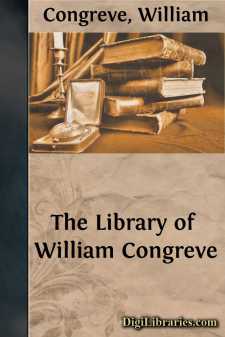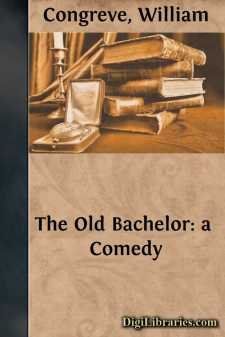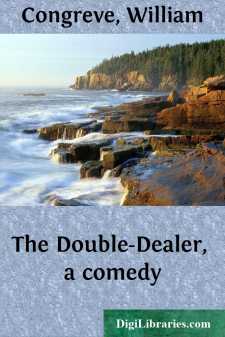Categories
- Antiques & Collectibles 13
- Architecture 36
- Art 48
- Bibles 22
- Biography & Autobiography 813
- Body, Mind & Spirit 142
- Business & Economics 28
- Children's Books 15
- Children's Fiction 12
- Computers 4
- Cooking 94
- Crafts & Hobbies 4
- Drama 346
- Education 46
- Family & Relationships 57
- Fiction 11828
- Games 19
- Gardening 17
- Health & Fitness 34
- History 1377
- House & Home 1
- Humor 147
- Juvenile Fiction 1873
- Juvenile Nonfiction 202
- Language Arts & Disciplines 88
- Law 16
- Literary Collections 686
- Literary Criticism 179
- Mathematics 13
- Medical 41
- Music 40
- Nature 179
- Non-Classifiable 1768
- Performing Arts 7
- Periodicals 1453
- Philosophy 64
- Photography 2
- Poetry 896
- Political Science 203
- Psychology 42
- Reference 154
- Religion 513
- Science 126
- Self-Help 84
- Social Science 81
- Sports & Recreation 34
- Study Aids 3
- Technology & Engineering 59
- Transportation 23
- Travel 463
- True Crime 29
The Library of William Congreve
by: William Congreve
Description:
Excerpt
INTRODUCTION
When William Congreve died in 1729 he left a collection of books which his old friend and publisher, Jacob Tonson, described (in a letter preserved at the Bodleian) as “genteel & well chosen.” Tonson thought so well of the collection that he urged his nephew, then his agent in London, to purchase Congreve’s books. But Congreve had willed them to Henrietta, the young Duchess of Marlborough, who was much concerned with keeping intact (as she wrote in her will) “all Mr. Congreaves Personal Estate that he left me” in order to pass it along to her youngest daughter Mary. This daughter, said by gossip to have been Congreve’s daughter also, married the fourth Duke of Leeds in 1740, and thus Congreve’s books eventually found their way to Hornby Castle, chief seat of the Leeds family in Yorkshire.
There apparently most of Congreve’s books remained until about 1930, when the eleventh Duke of Leeds sold his English estates and authorized Sotheby’s to auction off “a Selected portion of the Valuable Library at Hornby Castle.” Among the 713 items advertised for sale on June 2, 3, and 4, 1930, were ten books containing the signature of William Congreve. These ten, along with a few others that have been discovered here and there with Congreve’s name on the title page, and nine books published by subscription with Congreve’s name in the printed list of subscribers, made a total of some thirty-odd books known to have been in Congreve’s library. These, we may presume, were but a small part of the Congreve books which had been incorporated with the Leeds family library in 1740.
Finding and Identifying Congreve’s Book List and His Books
Among the voluminous papers of the Leeds family now stored in the British Museum, the Public Record Office, and several other depositories in England are at least a half-dozen manuscript lists or catalogues of Leeds books. In one list from the middle of the eighteenth century appear a few of the books known to have been in Congreve’s library. The same is true of lists dated 1810 and 1850. But it is impossible to use any of these to determine exactly which of the books had once been Congreve’s. Fortunately another manuscript list proves to be not a combination of Congreve and Leeds books but a separate catalogue of Congreve’s private library. This list, herewith printed, was found by the editor in an English county depository, the Yorkshire Archaeological Society in the City of Leeds.
Let us see why we may accept this list as Congreve’s and not simply another catalogue of Leeds family books—as the librarian of the Society had classified it. In the first place, it was found among the Leeds papers, in one of the sixteen boxes of manuscripts brought away from Hornby Castle shortly before it was torn down about 1930. Among the same papers, interestingly enough, is a copy of the marriage settlement (on the original parchment) whereby Mary Godolphin brought to the Leeds family the books which she had inherited through her mother from Congreve....





![The Comedies of William Congreve
Volume 1 [of 2]](https://digilibraries-com.s3.eu-central-1.amazonaws.com/covers/8dc1222e-f879-4d40-afe0-4a0d866881c1.jpg)
